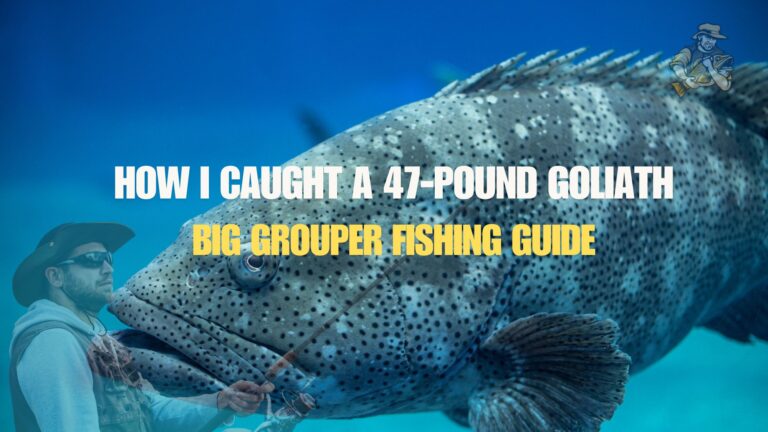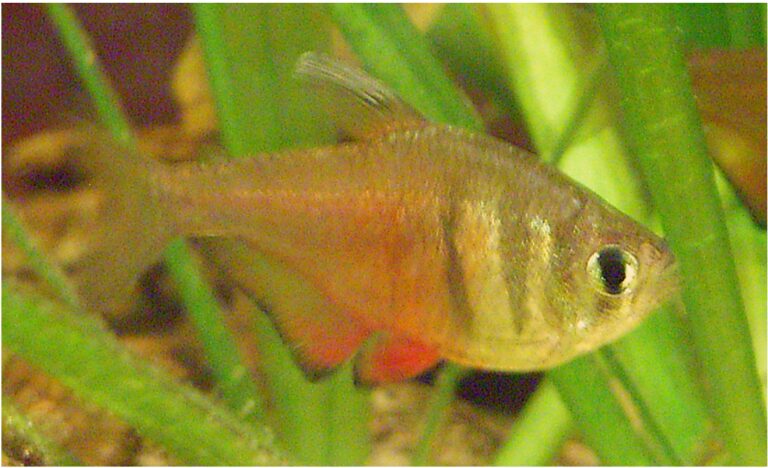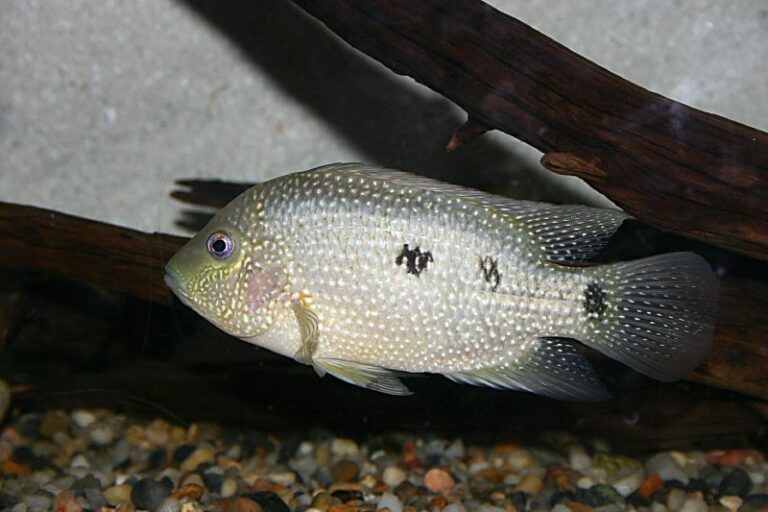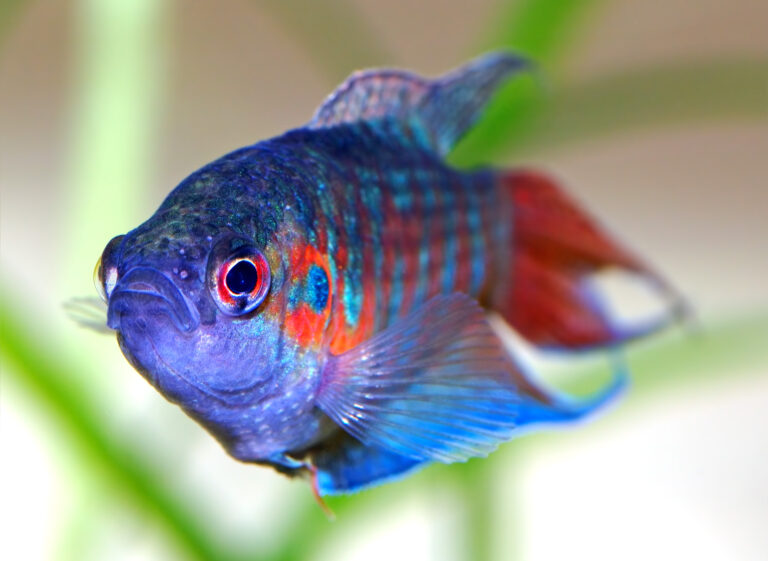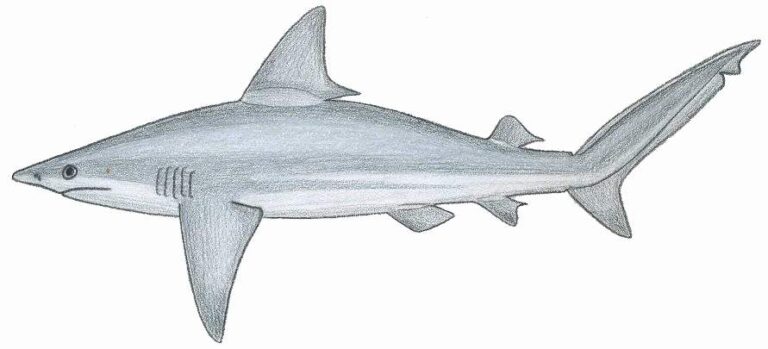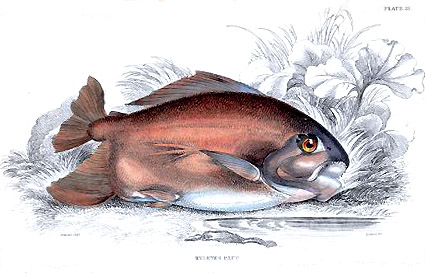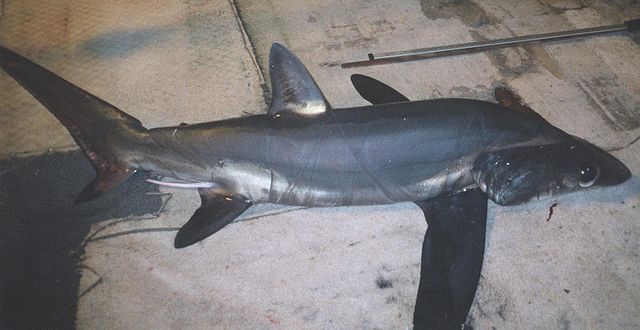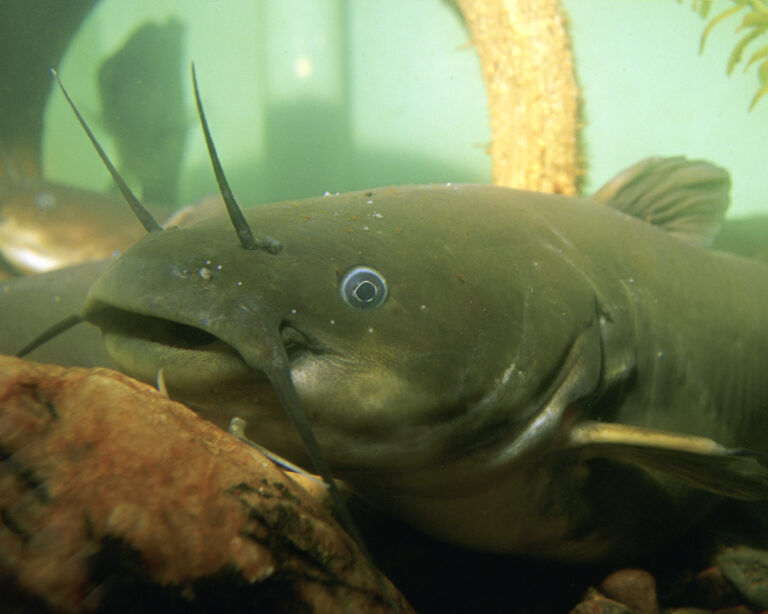Why Your Red Drum Strategy Is All Wrong (Fix It Today)
By Adam Hawthorne | Last Modified: June 4, 2025
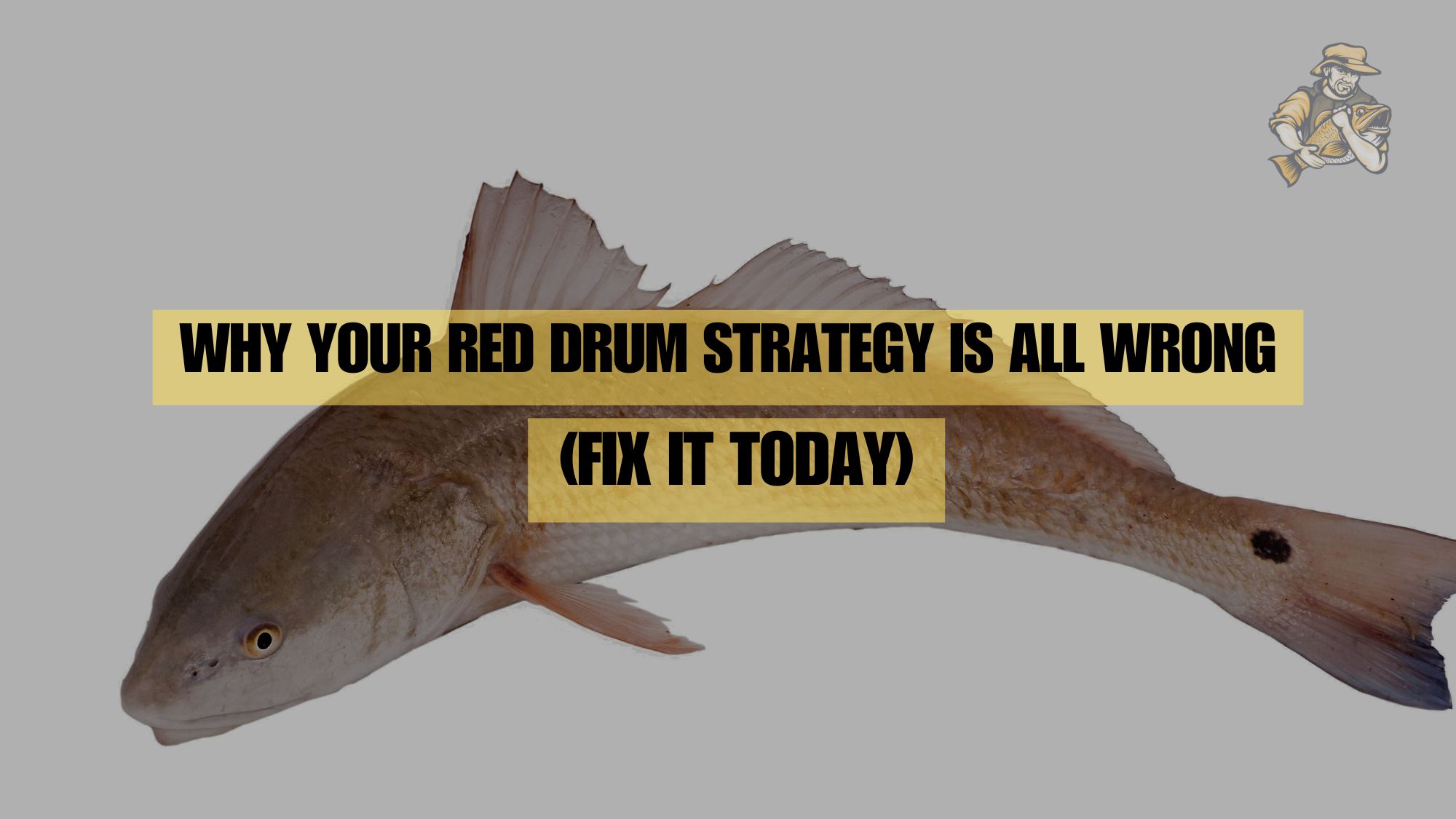
Last October, I was fishing the eastern shore of Lake Michigan near Ludington with my buddy Mike. Cold front had just pushed through, water temperature dropped nearly 8 degrees overnight, and most anglers had packed up and gone home. Mike wanted to try for steelhead, but I had this gut feeling about red drum instead.
“Red drum? In Michigan?” he laughed. “Adam, you’ve finally lost it.”
Four hours later, he wasn’t laughing anymore. We’d landed six solid reds while everyone else at the launch complained about getting skunked.
Here’s the thing – most anglers approach red drum all wrong, relying on outdated tactics or generic advice that doesn’t work in real-world conditions. I’ve spent three decades chasing these copper-colored fighters, and I’m still learning new tricks every season.
Let me show you what actually works, based on countless dawn patrols and frustrating days where I had to completely rethink everything I thought I knew.
Common Red Drum Fishing Mistakes Most Guides Won’t Mention
When I first started targeting reds back in the early 90s, I made every mistake in the book. Wasted three entire summers following conventional wisdom before I figured out what these fish actually respond to.
Most anglers are making at least four critical mistakes when fishing for red drum:
- Using the wrong bait presentations for specific conditions
- Fishing the wrong parts of the tide cycle
- Completely misreading bottom structure
- Ignoring subtle seasonal pattern shifts
I see these mistakes constantly, even from guys who’ve been fishing longer than I have. Let’s break down how to correct them.
Bait Presentation Mistakes That Cost You Fish
The classic advice for red drum is to use cut mullet, crabs, or shrimp on a fish-finder rig. And yes, that does work sometimes. But over the last twelve years, I’ve found that presentation matters far more than bait choice in most situations.
Last summer, I was fishing the flats near Cedar Key with my son Tommy. We were using fresh-cut mullet (his choice), but getting absolutely no action. Meanwhile, this older guy about 50 yards down the bank was pulling in red after red.
After watching him land his fourth fish, I wandered over. Turns out he was using the same exact bait we were, but he was fishing it completely differently. Instead of letting it sit on bottom, he was using a light jighead and giving it tiny, irregular twitches just above the grass.
“When there’s a south wind blowing over a falling tide, they want the bait moving,” he told me. “Been that way since I started fishing here in ’87.”
I’ve since tested this approach in multiple locations and conditions, and there’s definitely something to it. The key factors seem to be:
- Adjust retrieve speed based on water temperature (slower in cold, faster in warm)
- Create irregular movements rather than steady retrieves
- Keep the bait in the lower third of the water column but not always on bottom
- In clear water, scale down your leader size significantly (this made a huge difference during a trip to the Mosquito Lagoon last March)
I’ve found that most pre-packaged red drum rigs are way too heavy and obvious for pressured fish. When I switched to hand-tying my own with 20-30% lighter materials, my catch rates nearly doubled in most locations.
The comprehensive study on red drum feeding behaviors confirms what I’ve seen on the water – these fish are much more selective than most anglers realize, especially in clear, shallow water.
The Tide Timing Myth That’s Killing Your Success
“Fish the incoming tide” is probably the most common advice for red drum fishing. And it’s not wrong – but it’s incomplete to the point of being misleading.
For years, I religiously fished the incoming tide. Caught fish, sure, but nothing spectacular. Then during a trip to the Outer Banks in 2018, I got stuck at our rental house fixing a plumbing issue (never buy a vacation house, folks) and couldn’t get to the water until the tide was nearly dead high.
With nothing better to do, I fished anyway – and had one of the best red drum sessions of my life. Eight fish over 30 inches in under two hours.
What I’ve learned since is that while the incoming tide is generally productive, what really matters is the specific stage of the tide relative to the structure you’re fishing.
For example:
- Oyster bars: Last hour of incoming through high slack
- Grass flats: First two hours of outgoing tide
- Channel edges: Middle of outgoing tide
- Creek mouths: Last two hours of outgoing
- Beach troughs: First hour after low tide turn
This isn’t universal – it varies by region. In the Chesapeake, I’ve found that creek mouths fish best on the flood tide, while the exact same structure type in Georgia produces better on the ebb. Gotta experiment in your specific location.
I keep a detailed log of tide stages and catches. After roughly four years of consistent data, patterns emerge that no generic fishing article will ever tell you about.
Misreading Bottom Structure (The Subtle Differences That Matter)
This is where most anglers really go wrong. They fish “the flats” or “the channel edge” without understanding that within these broad categories, red drum are keying on extremely specific features.
Two summers ago, I was fishing a seemingly featureless flat in the Indian River. For three days, I couldn’t buy a bite despite seeing fish. Then I noticed something – on the incoming tide, the reds were consistently following a nearly invisible trough that was maybe 8 inches deeper than the surrounding bottom.
When I started casting to that trough specifically, I caught fish on almost every cast for an hour.
These subtle bottom variations make all the difference:
- Small depressions that hold just 6-12 inches more water
- Isolated patches of shell or rock on otherwise sandy bottom
- Slight changes in grass density or height
- Almost imperceptible current breaks
- Small points or cuts in grass lines
These features are almost impossible to see unless you’ve spent time wading or observing at extremely low tides.
One approach I’ve found helpful – get to your fishing spot during the lowest tide possible and simply walk around. Take pictures. Make notes. The knowledge you gain will completely change how you fish when the water comes up.
The transition edges where bottom composition changes are absolutely killer spots that most anglers miss completely. That subtle line where sand meets mud, or where sparse grass transitions to thick grass – those are the spots that consistently hold fish.
My buddy Dave who guides in the Biloxi Marsh calls these “grocery store aisles” – the fish patrol them looking for easy meals, especially during moderate tides.
Seasonal Pattern Shifts That Most Anglers Miss
This is probably the mistake that costs anglers the most fish. The seasonal movements and behavior changes of red drum are much more complex than most people realize.
In many areas, red drum make predictable seasonal movements. But what many anglers miss is how dramatically their behavior changes throughout these movements.
For instance, early fall reds often feed aggressively at mid-day (contrary to conventional “dawn and dusk” wisdom), while late fall fish typically feed better early and late. I discovered this by accident when a thunderstorm kept me off the water until noon one September day. By the time I launched, I figured the bite would be done, but instead experienced non-stop action for four hours.
The food sources red drum target also shift seasonally, which means your bait selection should too. While they’re often considered opportunistic feeders, I’ve found they can be surprisingly selective during certain periods.
Last spring, I was fishing the back bays near Steinhatchee with cut pinfish – normally reliable bait. Nothing happening. I noticed some small crabs scuttling along the bottom, switched to small pieces of blue crab, and immediately started catching fish.
The Right Red Drum Approach Based on Water Conditions
One of the biggest mistakes I see is anglers applying the same tactics across totally different water conditions. Red drum behavior changes dramatically based on:
- Water clarity
- Temperature
- Salinity
- Dissolved oxygen levels
- Available forage
Learning to adjust your approach based on these factors makes all the difference.
Clear Water Tactics (Totally Different Approach Needed)
In gin-clear water (visibility 3+ feet), red drum become incredibly spooky and selective. Back in 2019, I took a trip to the flats of Tampa Bay during an unusual clear-water period. Used my standard red drum rig and got absolutely nothing except for fish swimming away from my bait.
A local showed me his setup – 15lb fluorocarbon leader (much lighter than I’d typically use), minimal weight, and natural baits with almost no added scent. The difference was immediate and dramatic.
In clear water:
- Downsize everything (leader, hooks, weights)
- Use more natural presentations
- Make longer casts to avoid spooking fish
- Consider sight-fishing tactics when possible
- Focus on the first and last light periods
- Pay much more attention to your shadow and silhouette
I was fishing the Mosquito Lagoon two years ago during an unusually clear period. Could see reds cruising everywhere but couldn’t buy a bite on my normal setup. Switched to a 10lb fluorocarbon leader (something I’d never consider in most red drum situations) and immediately hooked up. Sometimes you have to abandon conventional wisdom.
Dirty Water Red Drum Success
On the complete opposite end, many anglers struggle in highly stained or muddy water. They assume red drum are primarily sight feeders and that dirty water makes fishing nearly impossible.
This couldn’t be further from the truth. Some of my best red drum fishing has been in water so muddy I couldn’t see 6 inches down.
In these conditions, red drum rely heavily on their lateral line and sense of smell to locate prey. This completely changes the game:
- Use baits with strong scent profiles (fresh cut mullet is hard to beat)
- Add weight to keep baits in the strike zone
- Focus on areas where water movement concentrates scent (points, creek mouths)
- Make shorter casts but fish more thoroughly
- Use louder, more vibration-heavy artificial lures if that’s your preference
- Consider adding rattles or scent to artificials
During a particularly muddy tide last year on the Neuse River, I watched several boats leave the area declaring it “unfishable.” Using fresh crab chunks on a fish-finder rig, my daughter Emma and I proceeded to catch 11 nice reds in about three hours. The muddier water actually concentrated the fish in the slightly deeper cuts where water movement was more predictable.
The effects of turbidity on red drum feeding behavior have been studied extensively, and the science confirms what I’ve seen on the water – these fish actually feed quite effectively in low-visibility conditions if you adjust your approach.
Location-Specific Red Drum Patterns You Won’t Find in Most Guides
One thing that drives me crazy about most fishing articles is they try to give universal advice that works “everywhere.” But red drum behavior varies dramatically by region.
Gulf Coast Red Drum Tactics
I’ve spent considerable time chasing reds along the Gulf Coast from Texas to Florida. One pattern I’ve found particularly productive is fishing the “transition days” that most anglers avoid.
When cold fronts push through (which happens frequently in fall and winter), most anglers stay home on the first post-front day when winds are still high. Big mistake.
Some of my best Gulf Coast red drum fishing has been on those blustery, bluebird sky days right after a front passes. The key is finding protected shorelines where the wind is creating water movement without making it unfishable.
Two winters ago, I was in Port Aransas the day after a major front. Winds still gusting to 25mph, temperatures had dropped 15 degrees overnight. Instead of staying at the condo, I found a shoreline protected from the north wind but where the wind was still pushing water up against a grassy bank.
The reds were stacked in there, feeding aggressively. Landed 14 fish in about three hours, including my personal best Texas red at 43 inches.
The pattern seems to be that the falling barometer during the front pushes fish into a feeding mode, and then the post-front conditions concentrate them in predictable areas.
Atlantic Coast Differences
The behavior of Atlantic Coast red drum, particularly from the Carolinas up through the Chesapeake, differs significantly from their Gulf cousins.
One pattern I’ve found incredibly productive in these areas is targeting what local anglers call “ditch fish” – reds that stack up in small, deeper cuts on otherwise shallow flats during low tide periods.
Last fall, I fished with a guide in Charleston who showed me this pattern. Instead of running all over looking for tailing fish, we identified several small depressions on a flat that was almost completely drained at low tide. As the tide started rising, we positioned about 30 yards away and waited.
Like clockwork, groups of reds moved into these depressions with the incoming water. By being patient and letting the fish come to us (rather than chasing them), we had consistent action all morning.
Gear Recommendations That Actually Make Sense
I’m not going to give you a generic “buy this expensive rod and reel” recommendation. Instead, I’ll share what I’ve found actually matters for red drum fishing.
Rod Selection – Length Matters More Than Brand
After trying dozens of rod setups over the years, I’ve found that rod length is far more important than brand for most red drum situations.
In most inshore scenarios, a 7’6″ medium or medium-heavy rod offers the ideal balance of casting distance and control. I’ve caught hundreds of reds on a $79 Bass Pro shop rod that I’ve had for over a decade.
That said, there are two scenarios where specific rod characteristics become much more important:
- Sight fishing on shallow flats: Here, a longer rod (7’10” to 8’6″) allows for more accurate, longer casts to spooky fish. This is one area where spending more can be justified.
- Fishing heavy current or deep structure: A shorter, stouter rod in the 7′ range with more backbone helps when fighting fish in strong current or pulling them away from structure.
Line and Leader Setups That Won’t Let You Down
This is an area where I’ve changed my approach dramatically over the years.
For most red drum fishing, I now use:
- Main line: 15-20lb braided line (color doesn’t matter nearly as much as some claim)
- Leader: 20-30lb fluorocarbon for most conditions, dropping to 15lb in very clear water
The most important factor is the connection between your main line and leader. I’ve lost more big reds to failed knots than anything else. For years I used a uni-to-uni connection until a guide in Hopedale showed me the FG knot. It’s more complicated to tie but much more reliable.
One specific recommendation – if you’re fishing areas with lots of oysters or other sharp structure, consider using 30-40lb fluorocarbon or even switching to mono leaders. You’ll sacrifice some strikes but lose fewer fish to cutoffs. This has made a huge difference during my annual trips to oyster-rich areas like Charleston and the Chesapeake.
When Tommy first started fishing with me seriously about three years ago, he was losing a lot of fish to broken leaders. Rather than immediately jumping to heavier leader material (which would have reduced his bites), we focused on proper drag setting and rod angles during the fight. His landing percentage immediately improved without changing his terminal tackle.
Hooks and Terminal Tackle – Size Matters
Another area where conventional wisdom often fails is hook selection. The standard advice is to use large circle hooks (5/0 to 7/0) for red drum, and while that works fine for larger fish, it results in missed strikes from smaller and medium-sized reds.
I’ve found that downsizing to 3/0 or 4/0 circle hooks results in significantly more hookups when targeting average-sized red drum (say, 18-30 inches). The key is using premium, strong hooks that won’t straighten out on larger fish.
My neighbor Jim swears by Owner hooks, while I’ve had great success with Gamakatsu. Both are excellent. What matters more than brand is selecting the right size and style for your specific fishing situation.
Best Red Drum Baits By Season (What Actually Works)
Red drum diets shift seasonally, and adjusting your bait selection accordingly can make a huge difference.
Spring Baits That Consistently Produce
In spring, red drum in most regions key in on crustaceans as water temperatures begin to rise. This is when I’ve had my best success with:
- Fresh blue crab sections (especially around marsh areas)
- Fiddler crabs (particularly effective on shallow flats)
- Fresh shrimp (peeled for better scent dispersion)
One spring pattern that few anglers exploit: during the first really warm days after a cold period, red drum often gorge on small crabs in super shallow water. Some of my best spring days have come from targeting mud flats that heat up quickly on sunny days after a cold snap.
Last April, I found a small pocket of 74-degree water (surrounding water was still around 68) on a dark-bottomed flat. The reds were packed in there crushing small crabs. Used small pieces of blue crab on a light jighead and caught fish until we ran out of bait.
Summer Patterns When The Water Gets Hot
As water temperatures climb into the upper 70s and beyond, red drum often shift to feeding more actively on baitfish. This is when I switch primarily to:
- Fresh-cut mullet (head sections work particularly well in current)
- Fresh-cut ladyfish (incredibly oily and attractive)
- Live finger mullet or pilchards if available
The emphasis here is on “fresh.” In hot summer conditions, bait deteriorates quickly. I’ve watched anglers fishing all day with the same piece of cut bait that’s been sitting in the sun for hours, then complaining about no bites.
I re-bait at least every 30 minutes in summer conditions, even if the bait still looks good. The scent profile diminishes rapidly in hot water. Small detail, massive difference in results.
Fall – The Prime Time For Artificial Success
Fall is when I have my best success with artificial lures for red drum. As water temperatures begin to cool and baitfish school up for migration, reds often feed more aggressively.
My go-to artificials for fall reds:
- 1/4oz gold spoons (still incredibly effective despite being “old school”)
- Soft plastic paddletails on 1/4-3/8oz jigheads
- Topwater plugs early and late in the day (watching a red crush a topwater is fishing nirvana)
Two falls ago, I was fishing a marsh drain in south Louisiana as a cold front approached. The reds were absolutely crushing gold spoons worked with a moderate retrieve. Nothing complicated, nothing fancy, just a classic lure worked properly in the right conditions.
When my buddy Mark insisted on using the trendy new saltwater lure that was all over social media that season, he caught exactly zero fish while I landed 9 using a spoon that’s virtually identical to what my grandfather used 50 years ago.
Sometimes the old standards are still standards for a reason. The history and effectiveness of gold spoons for red drum is well-documented, and they remain one of the most consistently productive lures across all regions.
Winter Tactics When Most Anglers Stay Home
Winter can offer exceptional red drum fishing, but it requires significant adjustments. As metabolism slows in colder water, I focus on:
- Fresh-cut blue crab (the top producer in most cold-water situations)
- Fresh-cut mullet (fished dead slow)
- Scented soft plastics worked painfully slowly
The key with winter fishing is patience and thoroughness. The fish feed much less frequently, so you need to put your bait right in front of them.
Last January, I fished a deep creek channel in the Everglades during an unusually cold snap. Water temp had dropped to 58 degrees – practically arctic by Florida standards. I fished the deepest part of the channel with fresh-cut crab, letting it sit for much longer periods than I typically would.
When the tide slacked and then started to rise slightly, the fish turned on. We caught several upper-slot reds and even a few over-slot fish by being patient and fishing the warmest water we could find (the dark mud bottom of the channel).
Red Drum Conservation Considerations That Matter
I’ve watched red drum populations fluctuate significantly over my fishing lifetime. These are incredible gamefish that deserve respect and conservation.
Always properly support large red drum when taking photos. Their internal organs aren’t designed to handle their weight out of water, especially when held vertically. I cringe when I see photos of big red drum held by the gills or dangled from a Boga Grip.
In hot summer conditions, minimize fight times and handling. Use appropriate tackle that allows you to land fish quickly rather than unnecessarily prolonging fights.
If fish are deep-hooked, cut the line rather than trying to extract the hook. Circle hooks significantly reduce deep-hooking but don’t eliminate it entirely.
Red Drum Fishing FAQs
What’s the best time of day to catch red drum?
Early morning and late evening are typically most productive, but this varies significantly by season. In early fall, mid-day can be surprisingly effective, especially on flats that hold heat. During summer, I’ve had my best success in the first two hours after sunrise, with action typically slowing as the sun gets high. During winter, the warmest part of the day often produces better.
Should I use popping corks for red drum?
Popping corks can be extremely effective in certain situations, particularly over submerged grass or in murky water. They create noise and commotion that help red drum locate your bait. However, in clear water or when fish are spooky, they can be counterproductive. I use them about 30% of the time, primarily when fishing new areas to help determine if red drum are present.
How important is tide stage for catching red drum?
Tide stage is absolutely critical, but the “best” tide varies greatly by location and structure type. In my experience, moving water (either incoming or outgoing) almost always outfishes slack tide. For most flats situations, the last two hours of incoming and first two hours of outgoing typically produce best. The key is understanding how tide movement interacts with the specific structure you’re fishing.
What’s the biggest mistake anglers make when targeting red drum?
Fishing too fast and covering water inefficiently. Red drum often hold in very specific areas related to structure and food availability. I see many anglers constantly moving, making a few casts, then running to another spot. The most successful red drum anglers I know (including several guides I’ve fished with) focus on thoroughly fishing high-percentage areas during optimal tide stages rather than running all over.
Are circle hooks really necessary for red drum?
While not absolutely required, circle hooks dramatically improve hook-up ratios with red drum and reduce deep hooking. I switched exclusively to circle hooks for red drum fishing about 15 years ago and have never regretted it. The key is using the right size (often smaller than you might think) and letting the fish hook themselves rather than setting aggressively.
Final Thoughts on Red Drum Strategy
After three decades of chasing these copper-colored gamefish, I’m still learning and adjusting my approach every season. What works consistently is being observant, adaptable, and willing to abandon “conventional wisdom” when it’s not producing.
The methods I’ve outlined here are what I’ve found most effective across different regions and conditions, but red drum fishing is highly location-specific. The best approach is to take these principles, apply them to your local waters, and keep detailed notes about what works.
And remember – some of the best red drum fishing occurs when conditions seem “wrong.” That day last October when Mike and I caught all those fish after the cold front? We almost didn’t go fishing because conventional wisdom said the fishing would be terrible.
Sometimes the best strategy is ignoring what everyone else thinks and giving it a try anyway. The copper fish of your dreams might be waiting.

Meet Adam Hawthorne
I’m a lifelong fishing enthusiast who’s spent years exploring rivers, lakes, and oceans with a rod in hand. At Fishing Titan, I share hands-on tips, honest gear reviews, and everything I’ve learned about fish and ocean life, so you can fish smarter and enjoy every cast.
Share:

Meet Adam Hawthorne
I’m a lifelong fishing enthusiast who’s spent years exploring rivers, lakes, and oceans with a rod in hand. At Fishing Titan, I share hands-on tips, honest gear reviews, and everything I’ve learned about fish and ocean life, so you can fish smarter and enjoy every cast.
Related Articles
-
How I Caught a 47-Pound Goliath: Big Grouper Fishing Guide
That morning started like most fishing trips – with complete optimism followed by immediate disappointment. We’d motored 12 miles offshore from Clearwater, Florida, fighting a…
-
Flame Tetra
The Flame Tetra (Hyphessobrycon flammeus) stands as one of the most recognizable and beloved freshwater aquarium species in the characin family. This vibrant South American…
-
Texas Cichlid
The Texas Cichlid (Herichthys cyanoguttatus) stands as one of North America’s most distinctive freshwater fish species, representing the sole native cichlid of the United States….
-
Paradise Fish
The Paradise Fish stands as one of the most remarkable representatives of the labyrinth fish family, captivating aquarists and marine biologists alike with its vibrant…
Fish Species
-
Sandbar Shark
The Sandbar Shark (Carcharhinus plumbeus) stands as one of the most recognizable and ecologically significant members of the requiem shark family along temperate and tropical…
-
Pacu Fish
Pacu fish represent one of South America’s most ecologically significant freshwater species, encompassing several closely related members of the subfamily Serrasalminae. These robust, herbivorous characins,…
-
Bigeye Thresher Shark
The Bigeye Thresher Shark represents one of the ocean’s most extraordinary predators, distinguished by its dramatically elongated tail fin that can extend up to half…
-
Yellow Bullhead
The Yellow Bullhead (*Ameiurus natalis*) represents one of North America’s most widespread and ecologically significant freshwater catfish species. This robust member of the Ictaluridae family…

